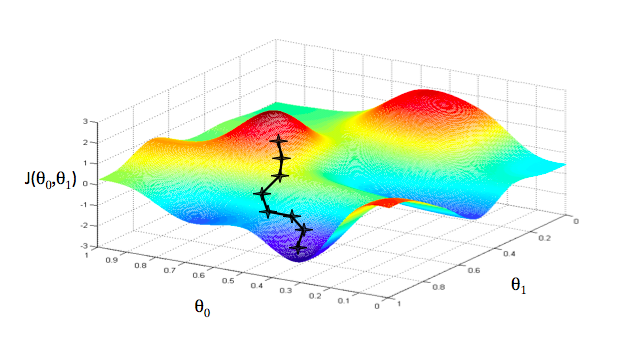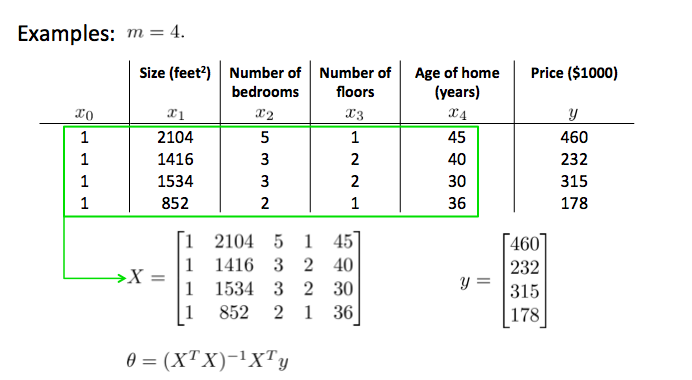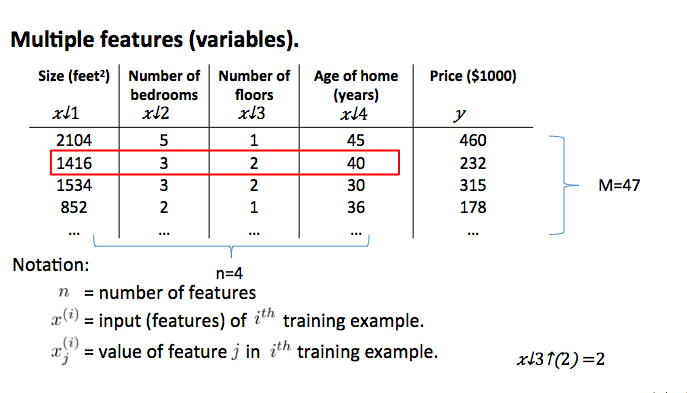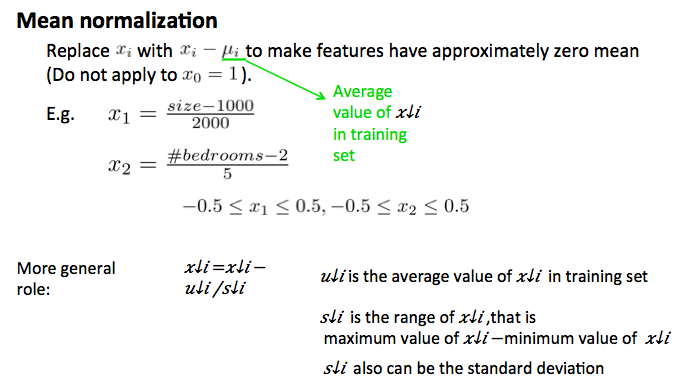1
2
3
4
5
6
7
8
9
10
11
12
13
14
15
16
17
18
19
20
21
22
23
24
25
26
27
28
29
30
31
32
33
34
35
36
37
38
39
40
41
42
43
44
45
46
47
48
49
50
51
52
53
54
55
56
57
58
59
60
61
62
63
64
65
66
67
68
69
70
71
72
73
74
75
76
77
78
79
80
81
82
83
84
85
86
87
88
89
90
91
92
93
94
95
96
97
98
99
100
101
102
103
104
105
106
107
108
109
110
111
112
113
114
115
116
117
118
119
120
121
122
123
124
125
126
127
128
129
130
131
132
133
134
135
136
137
138
139
140
141
142
143
144
145
146
147
148
| #include<stdlib.h>
#include<stdio.h>
#include<string.h>
#include<math.h>
#define OUTPUTID 10001
#define BUFFERSIZE 50000
#define ROWNUM 10000
#define COLNUM 385
double alpha = 0.1;
char buffer[BUFFERSIZE];
const char *delim = ",";
double x[ROWNUM][COLNUM];
double y[ROWNUM];
double result[ROWNUM];
double diff[ROWNUM];
double theta[COLNUM];
double temp[COLNUM];
void readdata(char *, bool);
void writedata(char *);
void test();
void gradient_descend_train();
int main(){
readdata("train.csv", true);
gradient_descend_train();
readdata("test.csv", false);
test();
writedata("predict.csv");
return 0;
}
void readdata(char *filename, bool haspredicted){
FILE *inputfile = fopen(filename, "r");
if(inputfile == NULL){
system("PAUSE");
exit(1);
}
//drop the first line
fscanf(inputfile, "%s", buffer);
//read all lines each
char *s;
for(int i = 0; i < ROWNUM; i++){
fscanf(inputfile, "%s", buffer);
//drop the first column
strtok(buffer, delim);
//read the predict y
if(haspredicted){
s = strtok(NULL, delim);
sscanf(s, "%lf", &y[i]);
}
//init x0
x[i][0] = 1;
//read the matrix
for(int j = 1; j < COLNUM; j++){
s = strtok(NULL, delim);
sscanf(s, "%lf", &x[i][j]);
}
}
fclose(inputfile);
}
void writedata(char *filename){
FILE *outputfile = fopen(filename, "w");
if(outputfile == NULL){
system("pause");
exit(1);
}
fprintf(outputfile, "%s,%s\n", "Id", "reference");
//write the result into file
for(int i = 0, id = OUTPUTID; i < ROWNUM; i++, id++){
//cout<<"write the line"<<i + 1<<endl;
fprintf(outputfile, "%d,%.6lf\n", id, result[i]);
}
fclose(outputfile);
}
void initTheta(){ //init theta
char *thetafilename = "theta.dat";
FILE *f = fopen(thetafilename, "r");
for(int j = 0; j < COLNUM; j++)
fscanf(f, "%lf", &theta[j]);
fclose(f);
//init the theta
for(int j = 0; j < COLNUM; j++)
theta[j] = 0;
}
void saveTheta(){ //save the theta
FILE *f = fopen("theta.dat", "w");
for(int j = 0; j < COLNUM; j++)
fprintf(f, "%lf\n", theta[j]);
fclose(f);
}
void calculateResult(){
for(int i = 0; i < ROWNUM; i++){
result[i] = 0;
for(int j = 0; j < COLNUM; j++){
result[i] += theta[j] * x[i][j];
}
}
}
double calculateJ(){
int turn = 0;
double cost = 0;
for(int i = 0; i < ROWNUM; i++){
diff[i] = result[i] - y[i];
cost += diff[i]*diff[i];
}
cost /= (ROWNUM * 2);
printf("%5d: J(theta) = %.6lf\n", ++turn, cost);
return cost;
}
void updateTheta(){
double sum;
for(int j = 0 ; j < COLNUM; j++){
sum = 0;
for(int i = 0; i < ROWNUM; i++)
sum += diff[i] * x[i][j];
theta[j] -= alpha * sum / ROWNUM;
}
}
void gradient_descend_train(){
initTheta();
alpha = 0.1001;
double cost = 1000;
while(cost > 26.4){
calculateResult();
cost = calculateJ();
updateTheta();
}
saveTheta();
}
void test(){
calculateResult();
}
|





